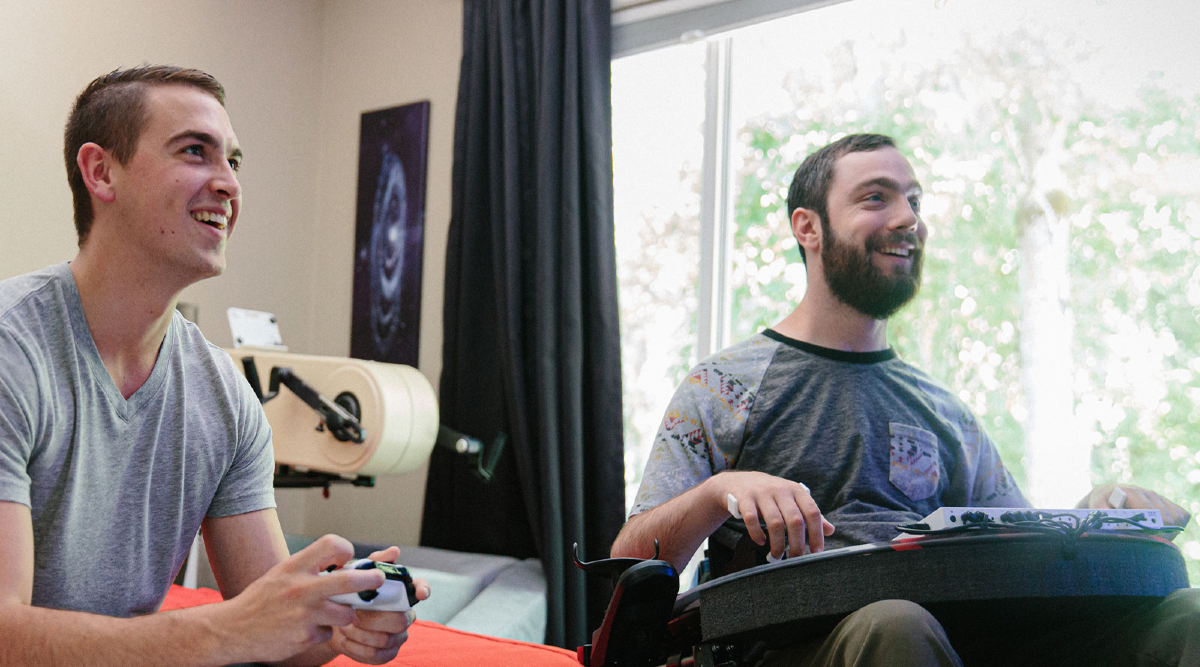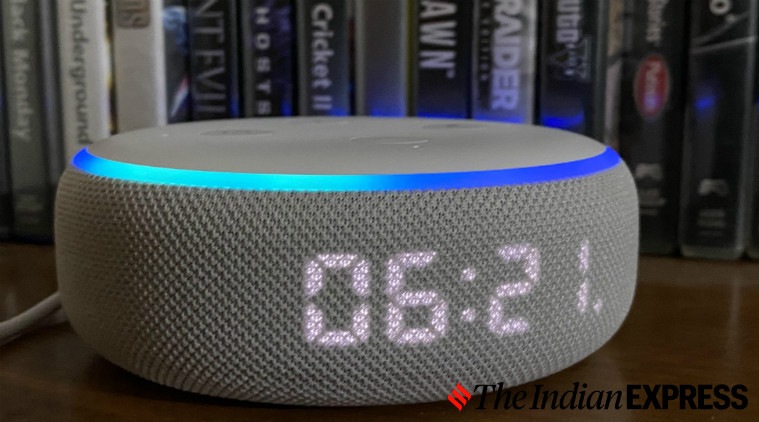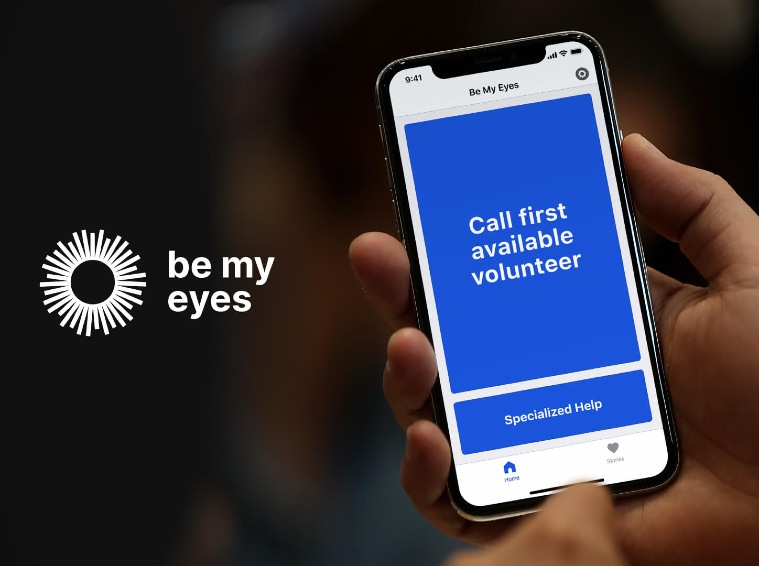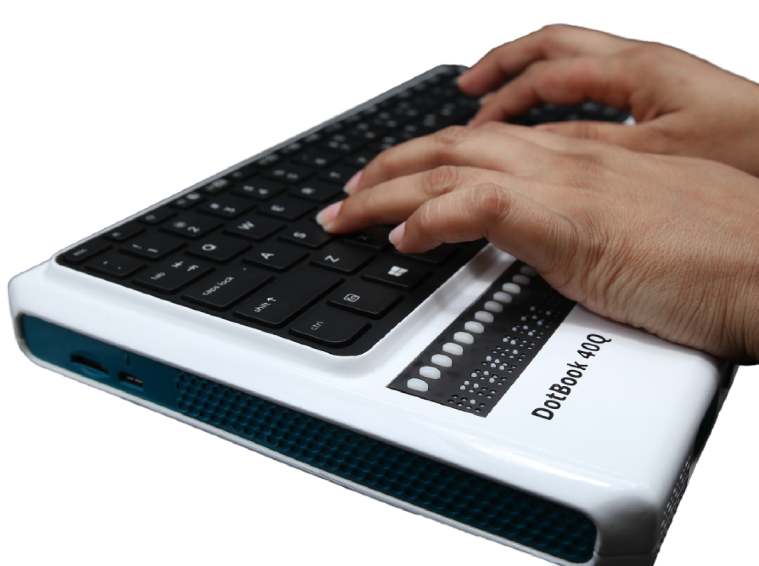 Xbox Adaptive Controller is specifically designed for gamers with disabilities. (Image credit: Xbox)
Xbox Adaptive Controller is specifically designed for gamers with disabilities. (Image credit: Xbox)With over a billion people (about 15 per cent of the world’s population) having some form of disability, according to WHO, it becomes important for tech companies to create their products with accessibility features in mind. As awareness towards assistive technology (AT) is growing, major tech companies and young startups are either creating special hardware products or incorporating software features designed to address the needs of individuals with disabilities. Here are some of the best examples of assistive tech designed to address the day to day barriers faced by people with disabilities.
Xbox Adaptive Controller
The Xbox Adaptive Controller has been designed for gamers with disabilities. The controller, which looks like an old-school white box, features two large black buttons that can be reprogrammed, and a smaller steering button. The rectangular-shaped controller features dozens of 3.5mm jacks round the back that connect to a number of external switches, buttons, mounts, and joysticks. The Xbox Adaptive Controller is wireless in nature with a built-in rechargeable battery but it can also work with a wired USB connection. The controller can be used with Xbox One consoles and Windows 10 PCs and is priced at Rs 8539. Time Magazine named Microsoft’s Xbox Adaptive Controller as one of the best inventions of 2018.
 Amazon Echo smart speaker. (Image credit: Anuj Bhatia/Indian Express)
Amazon Echo smart speaker. (Image credit: Anuj Bhatia/Indian Express)
Amazon Echo smart speaker
Many see the Echo as a mere smart speaker but the popular device can impact the lives of people with disabilities in a positive way. In fact, the Alexa-powered Echo is the finest example of how assistive technology can be so useful for people with special needs. For a person with low vision, the Echo can read daily stories, perform basic calculations, set alarms and reminders, and even perform simple searches, without needing to move your hands or changing your position. In a way, the Echo becomes a communication aid that helps make the lives of people with disabilities easier.
 Apple AirPods. (Image credit: Nandagopal Rajan/Indian Express)
Apple AirPods. (Image credit: Nandagopal Rajan/Indian Express)
Turn AirPods into a Hearing Aid
The AirPods can be used as a substitute for a hearing aid, thanks to its “Live Listen” feature. This feature has been designed to help those who are hearing impaired. To use AirPods as a hearing aid, go to Settings on your iPhone and choose Control Center, open Customize Controls and select the green + (plus) button next to Hearing to add it to the active Control Centre items. Once you are done enabling Live Listen, connect your AirPods to your iPhone, open Control Centre and select the Live Listen icon.
Google Live Captioning
Google recently added a Live Caption feature that enables real-time captions for videos, podcasts, or even voice notes on a phone. The feature is useful for people who are deaf or hard of hearing. When the Live Caption feature is on, it detects audio playing on a phone and automatically starts captioning on the phone screen. It supports up to 70 different primary languages, unfortunately, you need an active internet connection to work. At the moment, Live Caption is currently available on Google’s own Pixel phones and select Android smartphones, including the Galaxy S20 lineup.
 Apple iPhone 12 Pro. (Image credit: Nandagopal Rajan/Indian Express)
Apple iPhone 12 Pro. (Image credit: Nandagopal Rajan/Indian Express)
iPhone 12 Pro let see a blind how close another person is
The recently launched iPhone 12 Pro and iPhone 12 Pro Max have a LiDAR scanner that helps a blind person detect how close other people are. The new “People Detection” feature, which has been rolled as part of iOS 14.2, takes advantage of the iPhone 12 Pro’s LiDAR scanner to detect how close others are from the user who has low vision issues. A LiDAR scanner can be used to measure the distance to objects in a room. The scanner has been primarily used to improve augmented reality experiences, but Apple is thinking in a whole new direction to use a 3D sensor as assistive technology to help individuals who are suffering from low vision.
Samsung Good Vibes, Relúmĭno apps
Developed in India, Samsung’s Good Vibes helps the deafblind to have two-way communication with others using their smartphones. The app uses Morse code to convert vibrations into text or voice and vice-versa. The Good Vibes app can be downloaded from the Samsung Galaxy Store as well as from the Google Play Store. Meanwhile, Relúmĭno which has been developed by Samsung employees as part of the company’s C-Lab programme, works as a visual aid app for people with low vision. The app allows a person with low vision to magnify and minimize images, highlight the image outline, adjust colour contrast and brightness, and reverse colour.
 Huawei StorySign app. (Image credit: Huawei)
Huawei StorySign app. (Image credit: Huawei)
Huawei StorySign app
Nominated for Children’s BAFTA in 2019, Huawei’s StorySign is a free app designed to help deaf children learn how to read and enjoy bedtime stories and literature. The app uses a combination of augmented reality and AI to translate popular children’s books into sign language using Star, the friendly signing avatar. The pitch behind the StorySign app is to improve the learning experience for deaf children who struggle to learn to read. The StorySign app is available to download from the Google Play Store, Huawei AppGallery and iOS.
 Be My Eyes app. (Image credit: Be My Eyes)
Be My Eyes app. (Image credit: Be My Eyes)
Be My Eyes app
Be My Eyes is a free to use app that connects blind and visually impaired people to sighted volunteers via a remote video connection which can help them in a variety of tasks. Created by a Denmark-based furniture maker Hans Jorgen Wiberg, who is visually impaired, the app uses the phone’s camera through which the blind person can be connected to the volunteer, who can assist them with any of the vision-related problems. It could be a basic tech troubleshooting to reading printed text on the pack of a Coffee. Ever since the app made its debut in 2015, Be My Eyes has around 266,991 blind and low-vision people and more than 4 million volunteers around the world in over 150 countries. The app can be downloaded from the Google Play Store and Apple App Store.
 DotBook. (Image credit: iABLE)
DotBook. (Image credit: iABLE)
DotBook
Developed by IIT-Delhi researchers, “DotBook” is India’s first Braille laptop for the visually-impaired. Instead of a screen like regular laptops, DotBook uses Braille, a tactile system of reading and writing for use by the blind or visually impaired. Available in two models: the 40Q variant has 40 characters per line and offers a conventional QWERTY keyboard and a Braille keyboard and the 20P version comes with 20 characters per line and has only a Braille keyboard. Both models come equipped with the support for basic applications like email, a web browser and a calculator.
 TalkBack braille keyboard. (Image credit: Google)
TalkBack braille keyboard. (Image credit: Google)
TalkBack braille keyboard on Android
Google is so serious about assistive technology (AT) that it designed a TalkBack braille keyboard on Android that allows people who are visually impaired to type on their phones without requiring extra hardware. The keyboard uses a six-key layout and each key represents one of six braille dots. It supports Braille Grade 1 and Grade 2 and is only available in English at the moment. The Talkback braille keyboard can be turned on through the accessibility section within the settings of your Android phone. The keyboard supports all devices that run Android 5.0 or later.